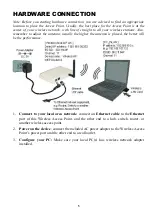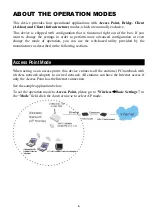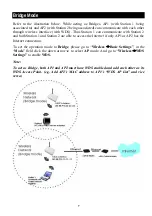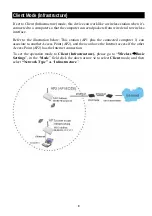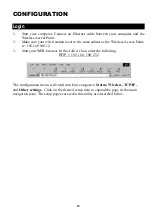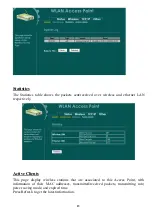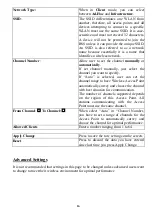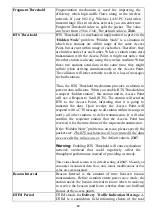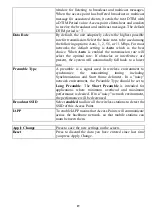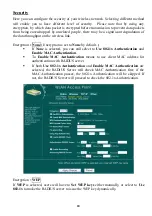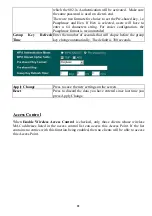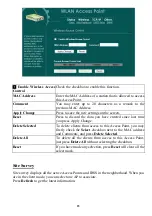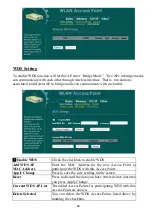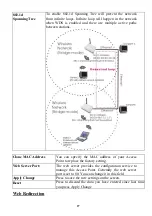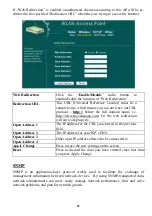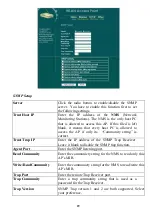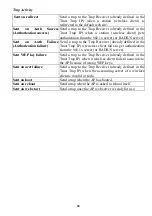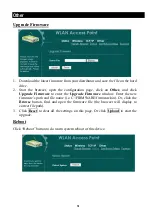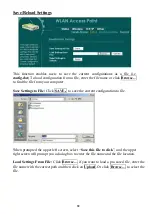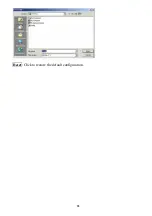
18
Fragment Threshold
Fragmentation mechanism is used for improving the
efficiency when high traffic flows along in the wireless
network. If your 802.11g Wireless LAN PC Card often
transmit large files in wireless network, you can enter new
Fragment Threshold value to split the packet. The value
can be set from 256 to 2346. The default value is
2346
.
RTS Threshold
RTS Threshold is a mechanism implemented to prevent the
“
Hidden Node
” problem. “Hidden Node” is a situation in
which two stations are within range of the same Access
Point, but are not within range of each other. Therefore, they
are hidden nodes for each other. When a station starts data
transmission with the Access Point, it might not notice that
the other station is already using the wireless medium. When
these two stations send data at the same time, they might
collide when arriving simultaneously at the Access Point.
The collision will most certainly result in a loss of messages
for both stations.
Thus, the RTS Threshold mechanism provides a solution to
prevent data collisions. When you enable RTS Threshold on
a suspect “hidden station”, this station and its Access Point
will use a Request to Send (RTS). The station will send an
RTS to the Access Point, informing that it is going to
transmit the data. Upon receipt, the Access Point will
respond with a CTS message to all station within its range to
notify all other stations to defer transmission. It will also
confirm the requestor station that the Access Point has
reserved it for the time-frame of the requested transmission.
If the “Hidden Node” problem is an issue, please specify the
packet size.
The RTS mechanism will be activated if the data
size exceeds the value you set.
. The default value is
2347
.
Warning:
Enabling RTS Threshold will cause redundant
network overhead that could negatively affect the
throughput performance instead of providing a remedy.
This value should remain at its default setting of
2347
. Should you
encounter inconsistent data flow, only minor modifications of this
value are recommended.
Beacon Interval
Beacon Interval is the amount of time between beacon
transmissions. Before a station enters power save mode, the
station needs the beacon interval to know when to wake up
to receive the beacon (and learn whether there are buffered
frames at the access point).
DTIM Period
DTIM stands for
Delivery Traffic Indication Message
. A
DTIM is a countdown field informing clients of the next
Summary of Contents for AP700C
Page 1: ...802 11b Access Point User s Guide ...
Page 17: ...14 ...
Page 36: ...33 Reset Click to restore the default configuration ...


